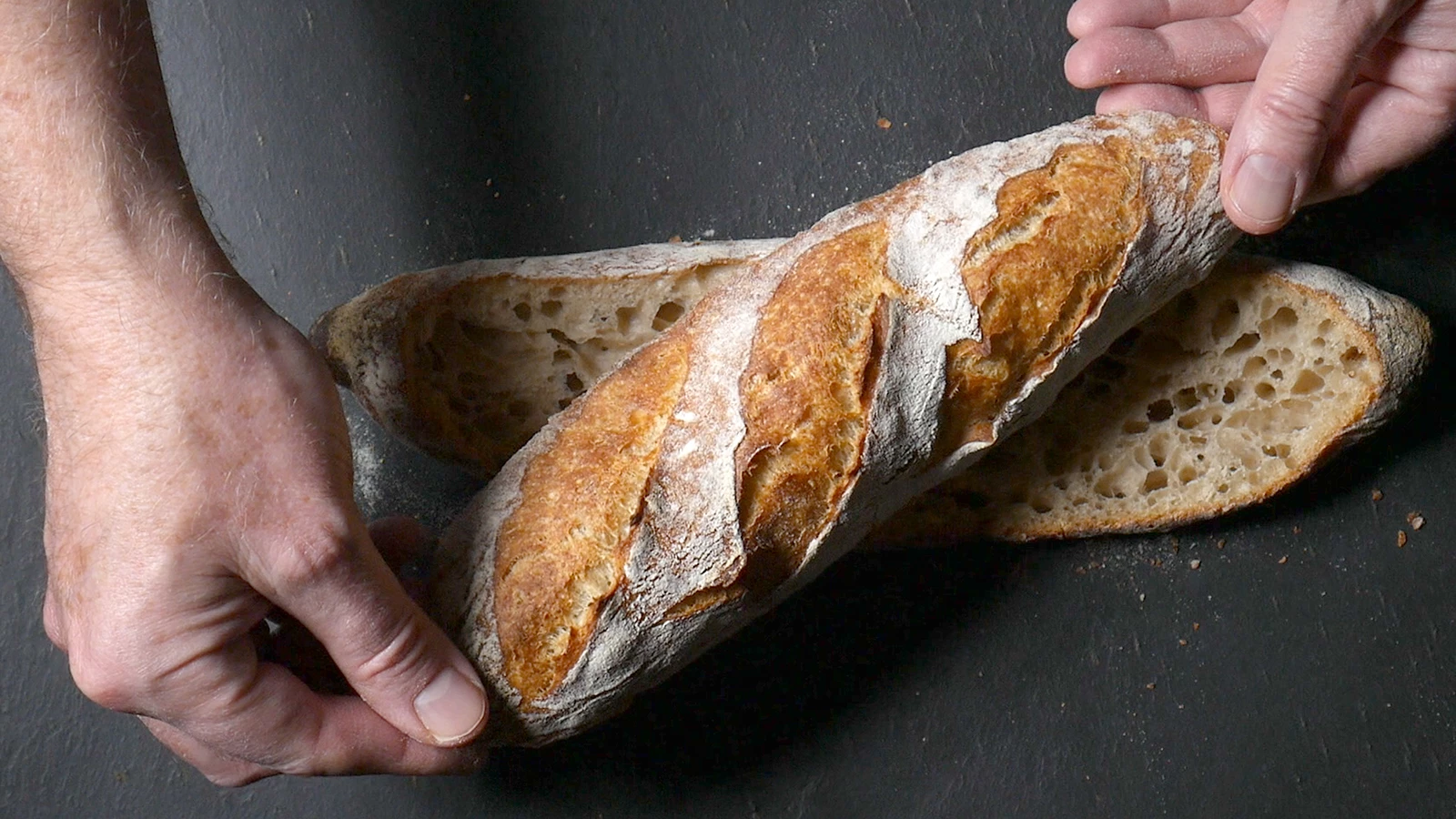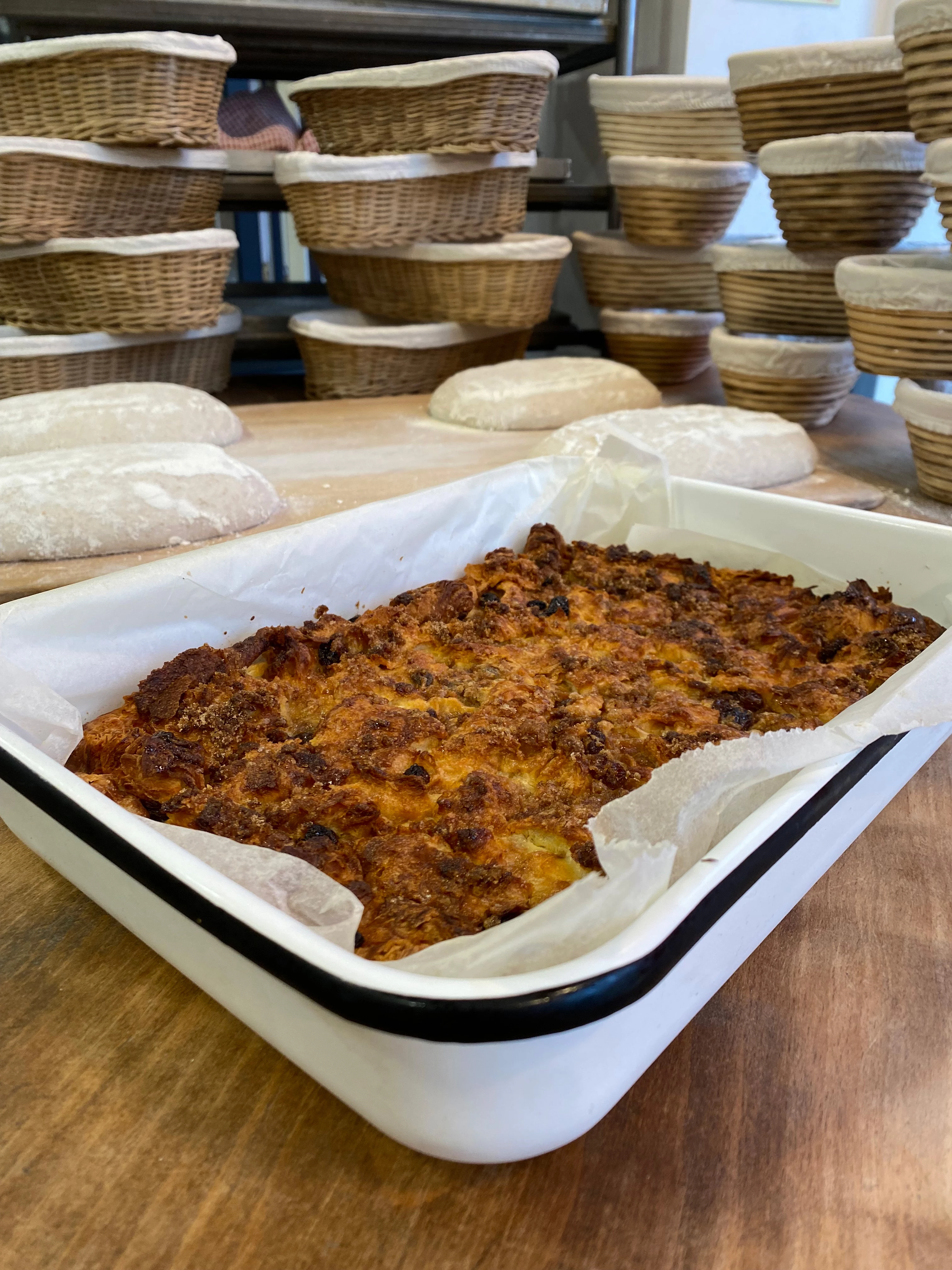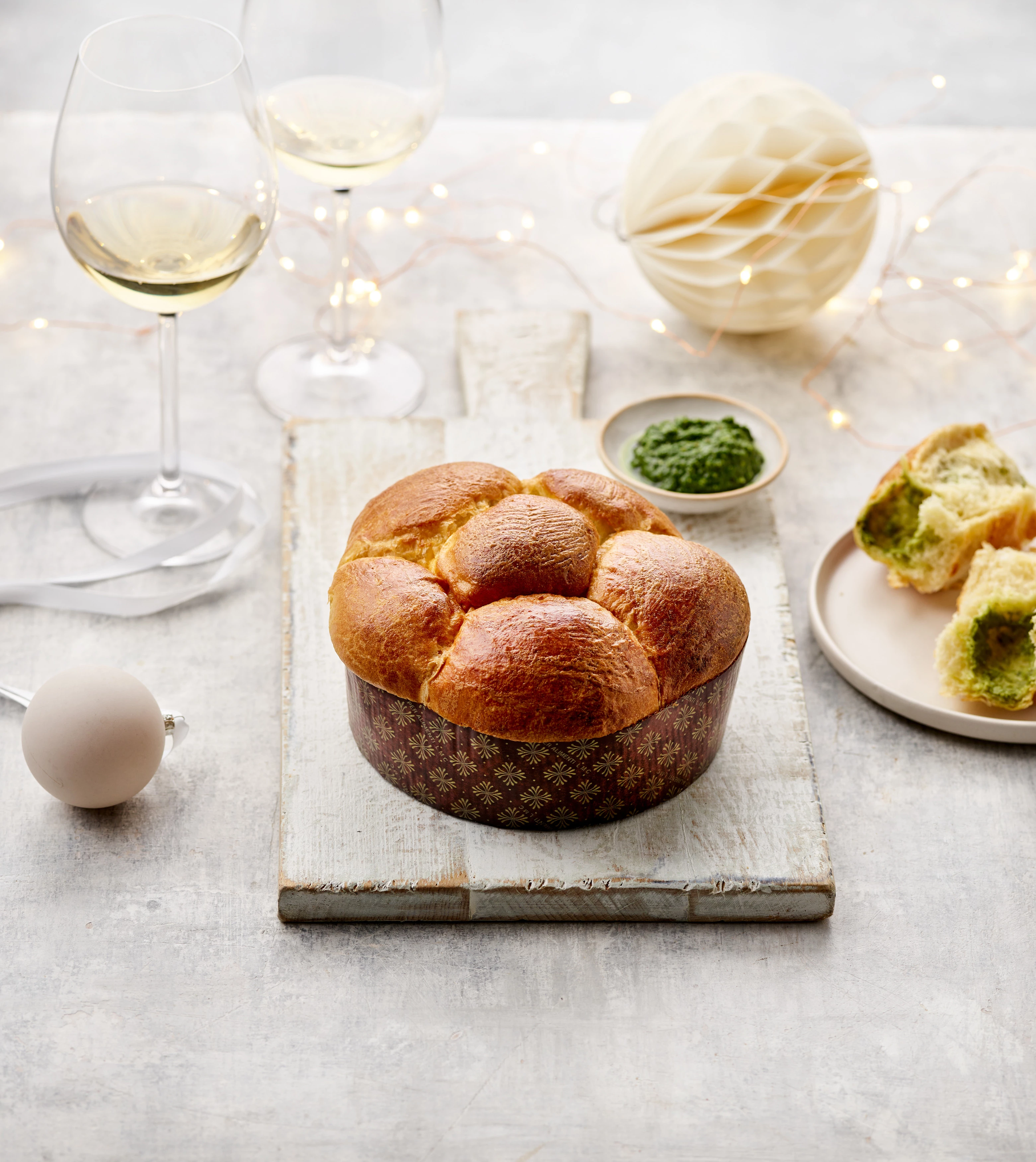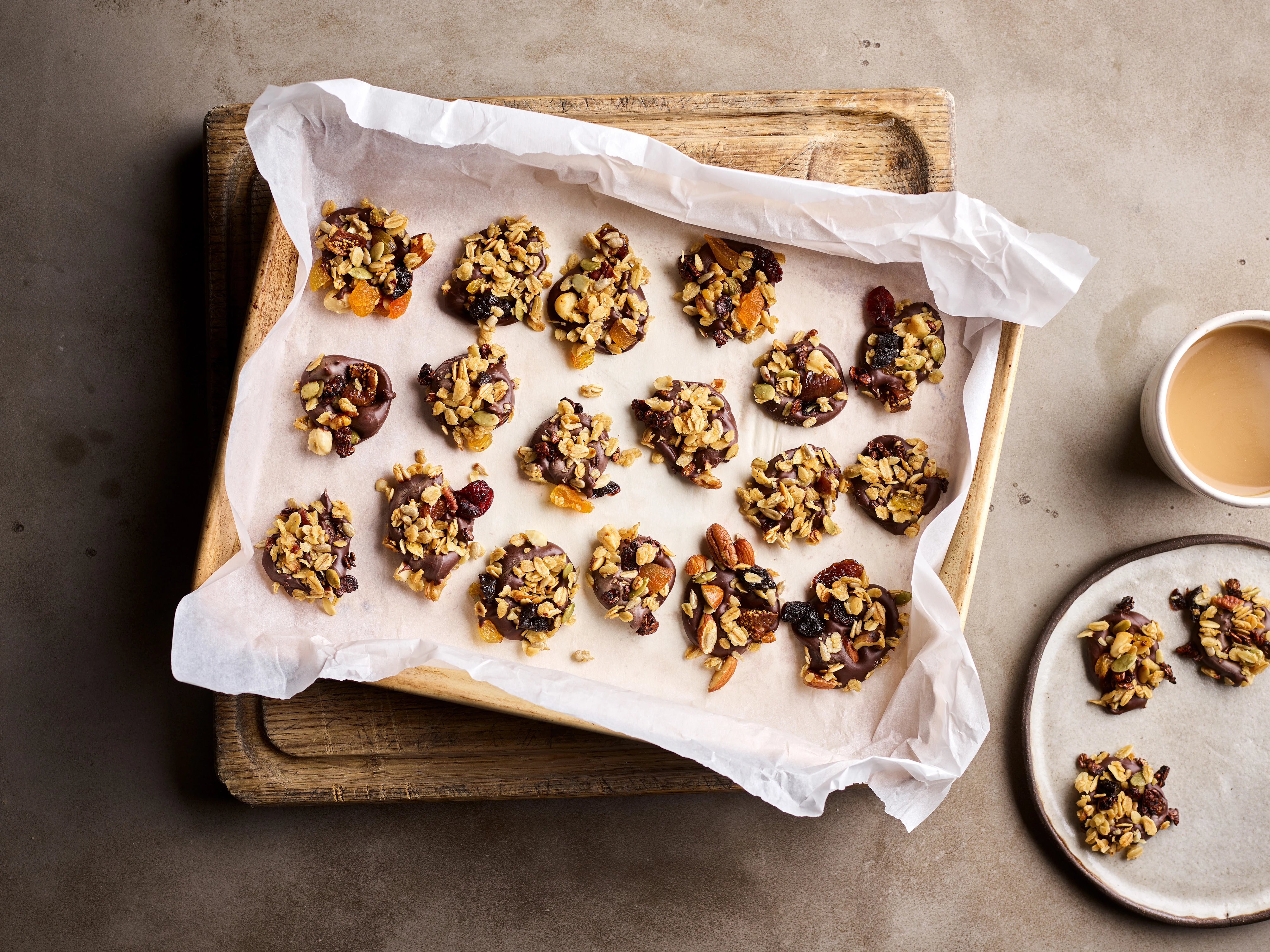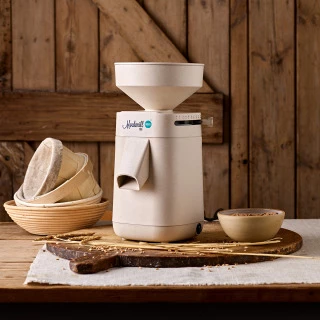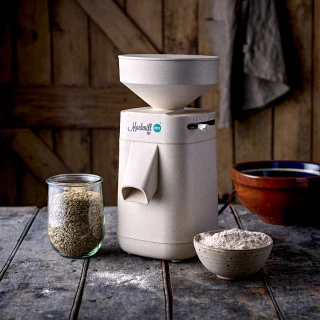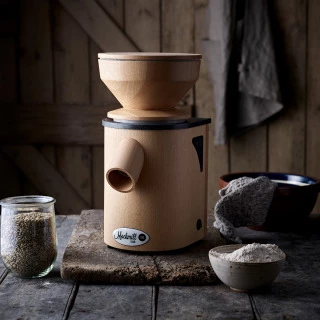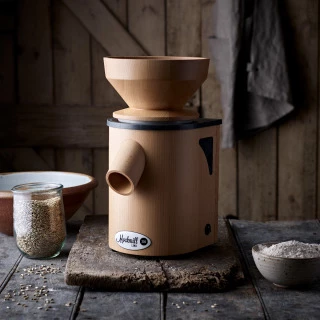Get the flour you want with a Mockmill
Bespoke milling is the hottest must-do in artisan baking today, and a Mockmill - a home tabletop electric grain mill - allows you to mill exactly what you want when you want it, giving you the ultimate control over the final grains – what millers call the grist, as in the saying “grist for the mill” – that will become your flour.
You can also choose the particle size your grains will be milled too, and this gives you loads of artistic scope to plan the impressive crumb-shot that will get friends saying “how did you achieve that”. So, say you’re after a fine, bubbly sourdough wheat crumb, you want it to have flecks of silvery rye grain through it, and slightly coarser bits of yellow corn and rosemary, the complex flour mix for this is achievable in minutes with the Mockmill.
"There’s something incredibly liberating and empowering that happens when a baker chooses the exact grains and seeds that get milled into their flour"
Healthwise, will it give me the ultimate superfood loaf? Yes and no. Though it will release a flood of micronutrients many will be lost in the baking process, oxidation, heat degradation, and even the sourdough fermentation process, can take their toll. Generally, a wide range of flavonoids and polyphenols decrease with baking, but one, quercetin – a plant pigment, the one that allows you to smile drunkenly and say “red wine is good for you” – is abundantly found in buckwheat flour, and the content is thought to increase with baking. Another chemical, phenolic acid, found in the bran of some wholegrains and dried fruit – the reason we can hold up our oatmeal raisin cookie and cry “it’s virtually a health supplement in a biccie”- is thought in some (not all) studies to be bake-stable. But overall, compared to a white flour loaf, one made with freshly milled whole grains will have micronutrient benefits, just not the whole kit and caboodle.
The other big boost Mockmill gives your baking will be in increasing the grain-based flavours available. Though pre-milled buckwheat flour can have a weird chemically tang, freshly milled buckwheat has none of this and just tastes sweetish and complex. Back in the 90s many of the bakery flours I’d relied on from France would often have buckwheat (sarrasin) or fava bean (fève) added. Today I can do that easily with the Mockmill and even go beyond that with small percentages of mung bean, split pea, brown rice and others, both in the sourdough starter and final loaf to boost the flavours, crumb colour and aroma. Look, today I feel my baking is pretty much on-point but still I can see a tantalising next level to take it to. If you’re like me, a Mockmill might be exactly what you need to achieve it.
I asked the legend himself, inventor and founder Wolfgang Mock what still keeps you excited when people use your mill. He told me “There’s something incredibly liberating and empowering that happens when a baker chooses the exact grains and seeds that get milled into their flour, quickly and easily. That’s the magic of the Mockmill that still, after nearly 50 years, keeps bakers like me and you using it.”


